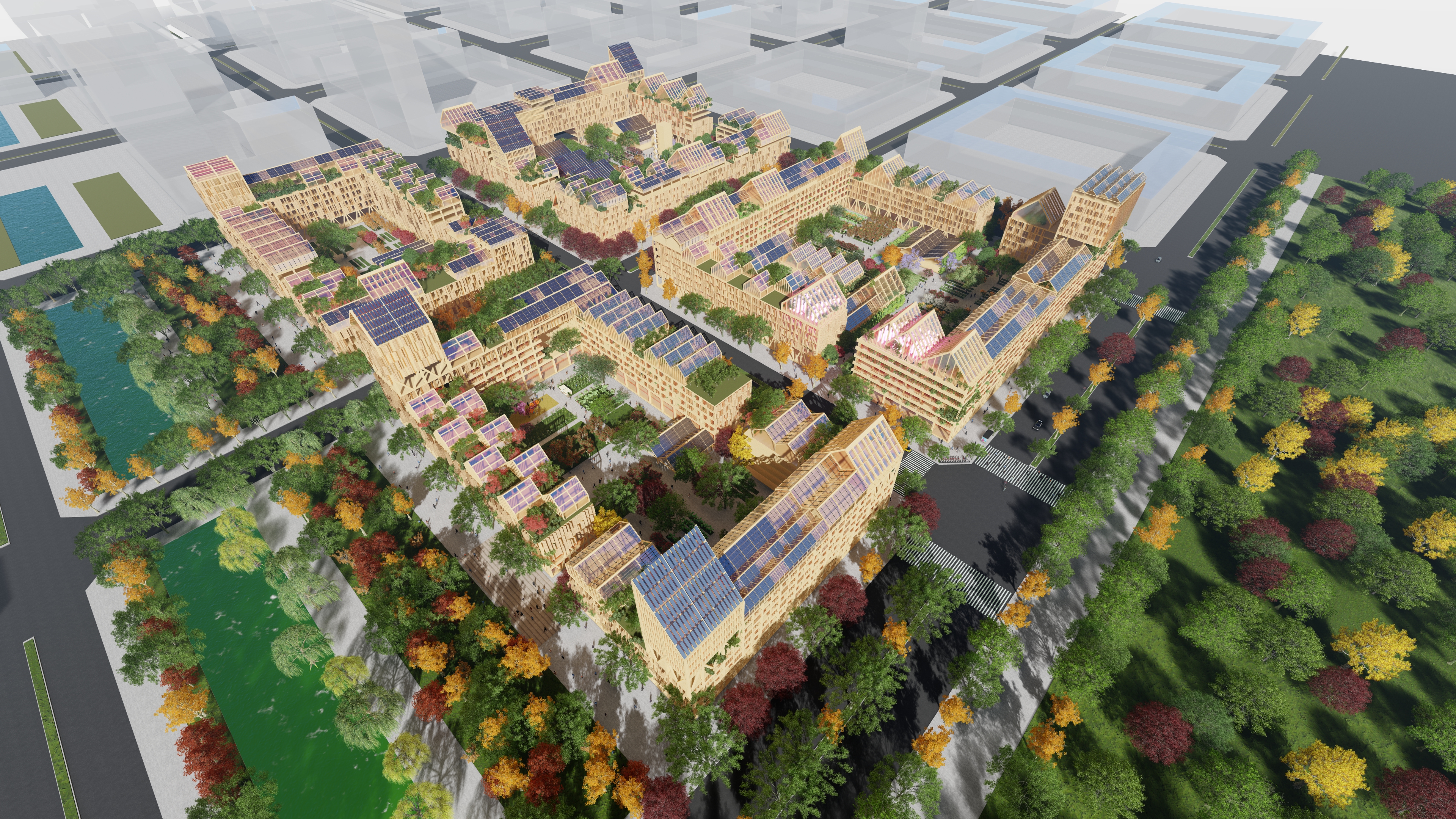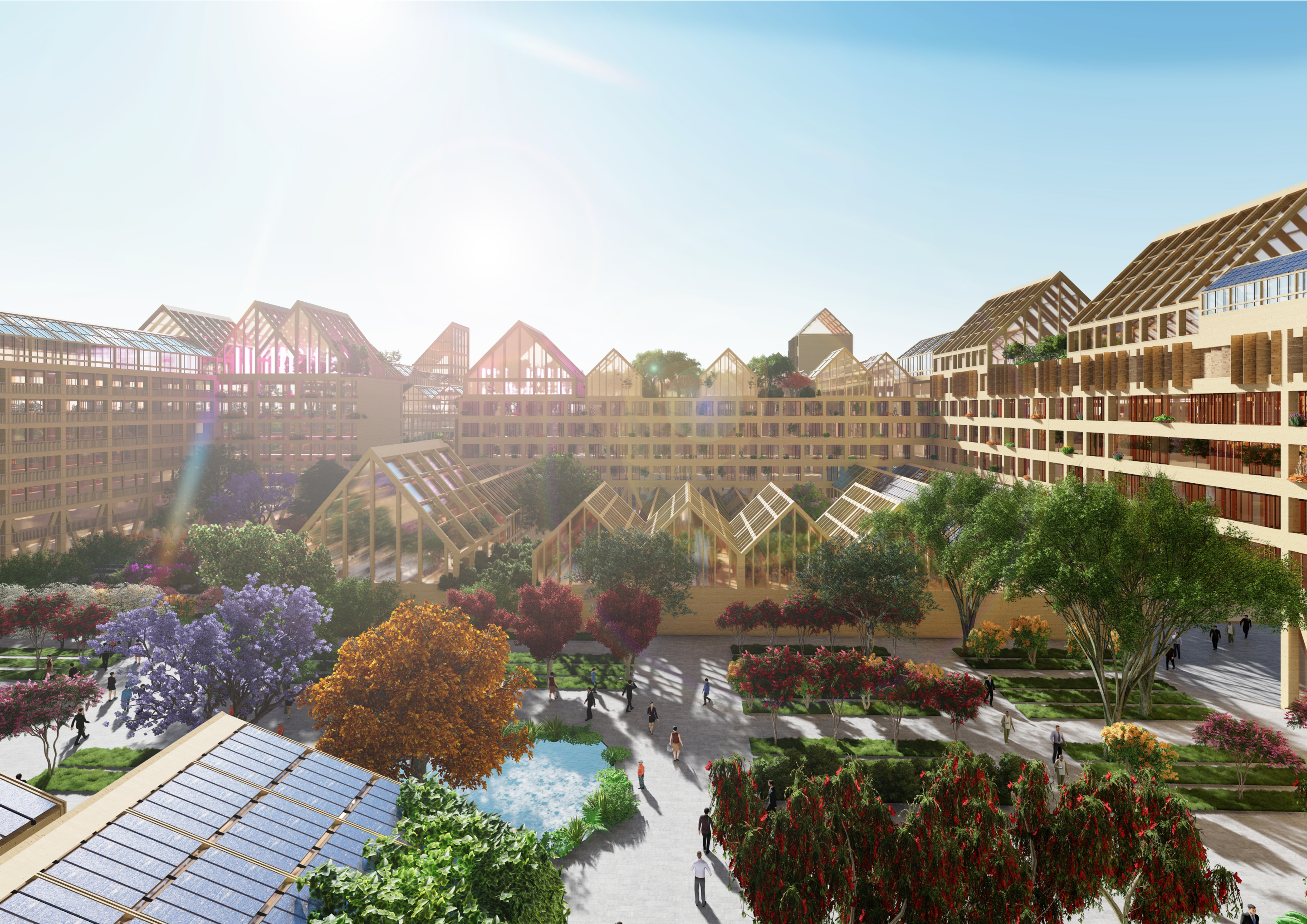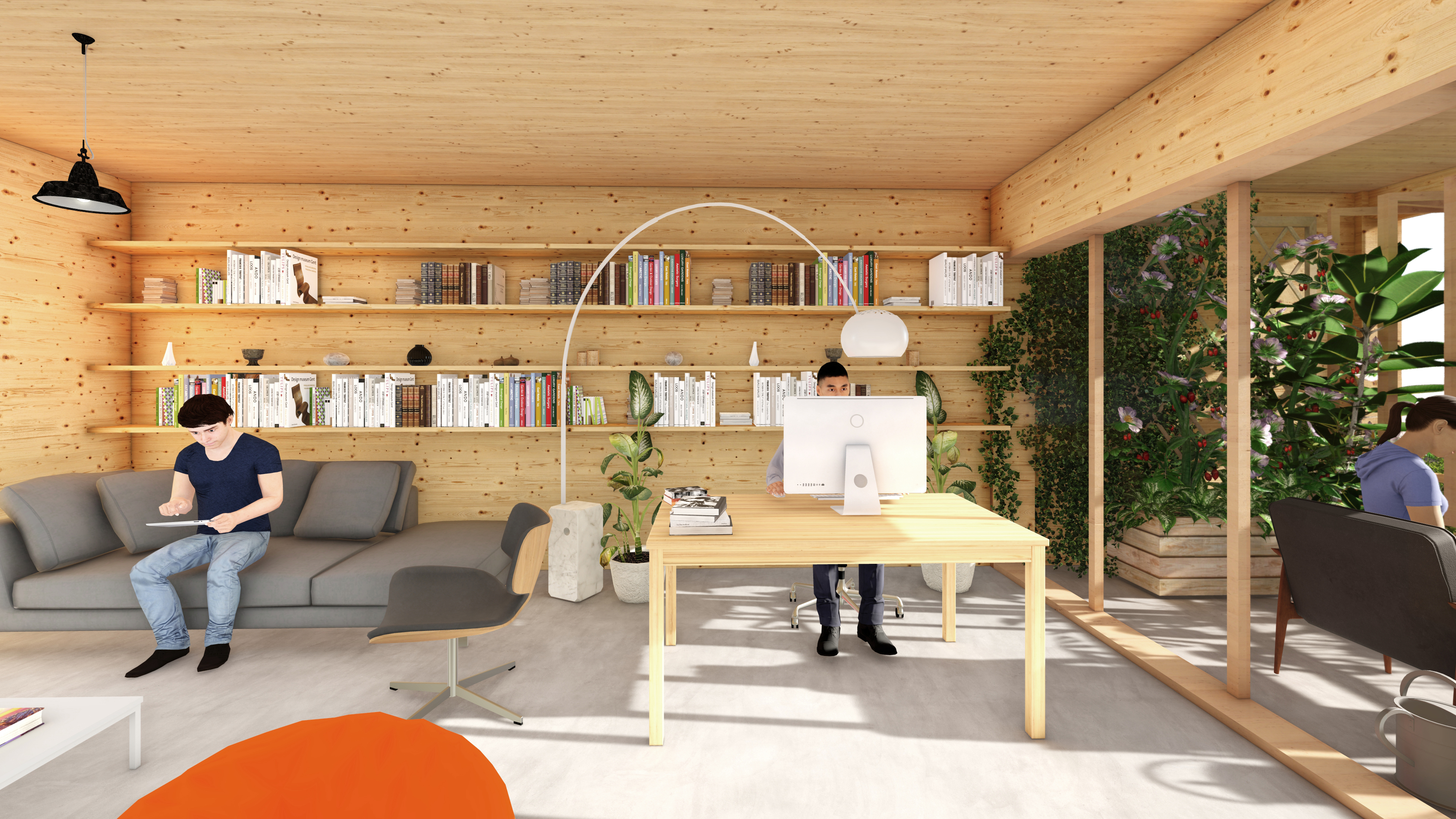The world's first pandemic-proof city is to be built from the ground up in northern China.
Guallart Architects of Barcelona recently won a competition to design a community in Xiong'an, a newly built urban area in Baoding in the northeastern province of Hebei, that aims to tackle many of the issues raised by a pandemic - particularly energy and food self-sufficiency during a lockdown. It's being promoted as "a new standard in the post-COVID-19 era."
Its design includes drone-friendly terraces to allow for socially distanced delivery, housing with ample space for remote working, rooftop farms for sustainability during lockdowns and large balconies for easy-access to outdoor space.
In case you missed it:
• COVID-19 and the city: The future of pandemic-proofed buildings
• Explainer: Smart cities using tech to be greener and more efficient
• COVID-19 and the city: How past pandemics have shaped urban landscapes

Guallart Architects won a competition to design a community in Xiong'an, that tackles the issue of energy and food self-sufficiency during a lockdown. /Vincente Guallart
Guallart Architects won a competition to design a community in Xiong'an, that tackles the issue of energy and food self-sufficiency during a lockdown. /Vincente Guallart
"Our proposal stems from the need to provide solutions to the various crises that are taking place, in order to create a new urban life based in the circular bio-economy," said founder Vicente Guallart, a former chief architect of the city of Barcelona.
Merging the traditional European urban block system with Chinese modern towers, and urban farming methods, the design for Xiong'an incorporates a host of ways of providing all amenities "even in moments of confinement."
Amid COVID-19, ideas to improve urban sustainability, mobility, and food security have been implemented in cities from Amsterdam to Sydney, with the pandemic accelerating new technologies, bicycle lanes and the reclamation of road space to create socially distanced urban spaces around the world.

All of the development's buildings will be covered by greenhouses for local food production. /Vincente Guallart
All of the development's buildings will be covered by greenhouses for local food production. /Vincente Guallart
However, Guallart's design for Xiong'an, masterminded during lockdown in his native Spain, will be one of the first to be built almost from scratch to specifically suit the demands of COVID-19.
"We wanted to make a manifesto of those things that we thought were important during lockdown and in the future," said Guallart, and the settlement's design remedies many of the urban shortcomings highlighted during the peak of the pandemic.
All of the development's buildings will be covered by greenhouses for local food production and on the ground floor, there will be small, co-working digital factories for 3D printers and rapid prototyping machines that can produce objects for daily use.
The four blocks will also be mixed-use, including apartments, residences for young and old people, offices, swimming pools, shops, food markets, kindergartens, and administrative centers, meaning there will be limited necessity to commute.
For the designers, the urban enclave will essentially contain an internal metabolic system that integrates energy production, recycled water, food production and material reuse, making it highly self-sustainable.

The design incorporates housing with ample space for remote working. /Vincente Guallart
The design incorporates housing with ample space for remote working. /Vincente Guallart
"If homes allow tele-work and tele-education, have flexible spaces on large terraces and cities can grow food on the roofs or print objects in their neighborhoods, we will be more prepared for the crises of the future," said Guallart.
And with concerns surrounding the COVID-19 pandemic often intertwined with those around the climate crisis – the need for fresh air and green spaces, energy self-sufficiency, and the reduction of carbon-polluting commuting, for example – the architect believes this is an opportunity to promote new urban formats focused on ecology.
"This pandemic has accelerated the future," said the architect.
"Cities have seen what they are capable of if they face a challenge and therefore decisions related to climate change and its impact on the urban model, on the design of buildings, on mobility, should be made immediately.
"We cannot continue designing cities and buildings as if nothing had happened."
Source(s): Reuters